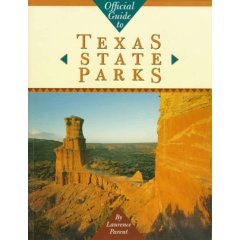
With gasoline and airfare prices soaring, many families may be planning summer vacations closer to home this year. One high-value, low-cost option is Texas State Parks, which are “getting better all the time” thanks to increased funding provided by state lawmakers and voters.
The 80th Texas Legislature passed House Bills 1 and 12, providing an additional $25.6 million for state park operations during the 2008-09 biennium. Lawmakers also appropriated roughly $69 million in bond authority to fund state park major repairs, including $17 million under Proposition 8 and a little over $52 million in new bond authority from Proposition 4.
Last November, voters approved Proposition 4, which allocates $25 million to dry-berth the Battleship Texas to ensure its long-term preservation and another $27 million for major infrastructure repairs at state parks across Texas. After bonds are approved and sold this summer, design and construction contracts will be let this fall, and major repair work will start in 2009.
Already, more than 200 new state park employee positions have been filled or advertised. Repairs of long-neglected facilities have begun. Campgrounds that closed two years ago due to limited funds have reopened, and days and hours of park operations have been extended. Park visitors are not only noticing better maintained facilities, but they’re also seeing expanded interpretive programming such as ranger talks and school visits, plus better customer service.
“All Texans owe a debt of thanks to our governor and legislature for investing in our state park system,” said Carter Smith, Texas Parks and Wildlife Department executive director. “Research shows this is a wise investment that pays returns in many ways. State parks are economic engines that draw tourism dollars to host communities. They protect priceless natural and cultural resources, serve as outdoor classrooms for schools and youth groups, and provide a nearby, low-cost way for urban families to reconnect with nature and the outdoors. With the support of our elected leaders, we intend to build on the wonderful new beginning taking place this year and create the world-class park system Texas needs and deserves.”
University research shows state spending on parks pays economic returns. Texas A&M University researchers studied 80 Texas state parks and in 2005 reported that the 80 parks studied generated an estimated total of $793 million in retail sales, had a $456 million impact on residents’ income and created roughly 11,928 jobs. The Texas Coalition for Conservation, a nonprofit umbrella group formed to support parks and natural resource conservation, commissioned the research to determine the economic value of state parks.* For cost reasons, only 80 state parks were studied. There are currently 93 state parks in Texas.
The A&M research also showed state parks draw outside visitor dollars into host counties. Researchers analyzed expenditures of park visitors from outside host counties, excluding spending by local residents and “casual” state park visitors attracted to the community for other reasons. In almost every case, benefits to the community outweighed state costs to operate the park. The complete university report is on the TPWD Web site.